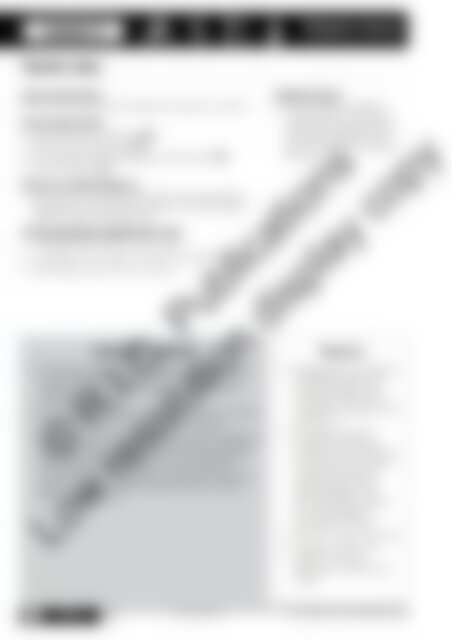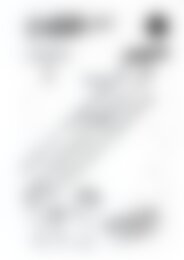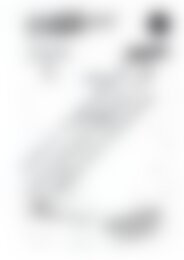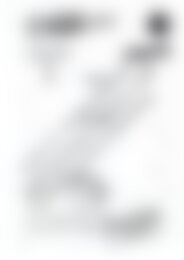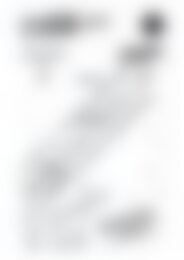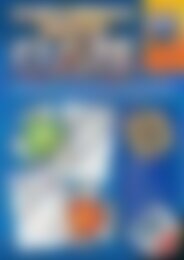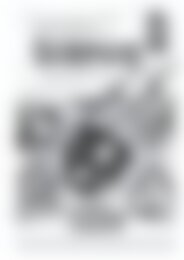6172RB Science a STEM approach Year 2 low res watermark
Create successful ePaper yourself
Turn your PDF publications into a flip-book with our unique Google optimized e-Paper software.
Lesson 2<br />
Biological sciences<br />
GROWING AND CHANGING<br />
Teacher notes<br />
<strong>Science</strong> inquiry focus:<br />
How do humans grow and change from a baby to an adult?<br />
<strong>Science</strong> Inquiry Skills:<br />
• Questioning and predicting QP<br />
• Planning and conducting PC<br />
• Processing and analysing data and information PA<br />
• Communicating C<br />
<strong>Science</strong> as a Human Endeavour:<br />
• Students act like scientists when they make observations,<br />
ask questions and describe changes in human beings at<br />
different stages of development.<br />
Technology/Engineering/Mathematics links:<br />
• using a QR code reader to view a video<br />
• using iMovie® (or similar) to create a time-lapse video<br />
• submitting a video online or via email<br />
Background information<br />
• All living things grow and their featu<strong>res</strong> change over the<br />
course of their life. Growing and changing is part of an<br />
organism’s ability to find and use available <strong>res</strong>ources,<br />
reproduce and survive.<br />
• The appearance and activity of people, animals and plants<br />
changes as they go through a complete life cycle.<br />
• The human life cycle can be divided into different stages in<br />
a number of ways. The stages include infancy, childhood,<br />
adolescence/teenager, adulthood and old age/elderly.<br />
The lengths of these stages vary across individuals,<br />
cultu<strong>res</strong> and time. Development in the stages is affected<br />
by environmental and physiological factors, as well as<br />
differing experiences.<br />
Assessment focus:<br />
• The worksheet on page 10<br />
may be used as a formative<br />
assessment to gauge student<br />
understanding that humans<br />
grow and change throughout<br />
their lives.<br />
Resources<br />
• Photographs of the teacher<br />
at different stages of life<br />
if possible (baby, child<br />
and adult). These can be<br />
scanned for viewing on the<br />
whiteboard<br />
• Photographs of each<br />
student as a baby and<br />
throughout their childhood<br />
to the p<strong>res</strong>ent day. Ensure<br />
students bring at least<br />
12 photographs from<br />
different stages of their<br />
life. Alternatively, parents<br />
may provide digital<br />
photographs instead<br />
• Sufficient copies of page 10<br />
• Computer tablet with<br />
iMovie® or similar<br />
application, and QR code<br />
reader<br />
© R.I.C. Publications<br />
Low <strong>res</strong>olution display copy<br />
8 <strong>Science</strong>:<br />
A <strong>STEM</strong> APPROACH<br />
YEAR<br />
2<br />
978-1-925431-95-7 R.I.C. Publications® – www.ricpublications.com.au


